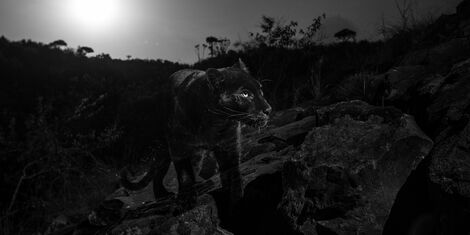
Kenya has cemented its place as a natural tourist destination after scientists documented extremely rare footage of the black leopard alongside two young cubs at the Mpala research centre in Laikipia.
Popularly known as the black panther, the highly secretive and unique feline was captured using San Diego Zoo's Global remote cameras that had been set up as far back as October 2018.
However, a scientist in Population Sustainability at the San Diego Zoo Institute for Conservation Research, Nichola Pilfold, revealed that several adjustments on the position as well as calibration of the cameras was what resulted in the unique footage.
"It was during my last Kenya site visit in February 2019 that we fine-tuned camera positions in Mpala with Limo Lempaira, a leopard conservation field assistant, and Tony Lokorodi, a Mpala security assistant, who had originally recommended the site where we found the leopard family," the biologist stated.
The recording which reveals the black leopard with a black cub as well as a golden one excited a lot of genetic research scientists around the world.
An excited Pilfold affirmed that the recording was fodder for biologists who were interested in studying recessive genes and the field of genetics as a whole.
"It is almost certain that she mated with a golden male that also carried a copy of the recessive black gene, which resulted in one black cub (recessive colouration) and one golden (dominant colouration)," he remarked.
The latest melanistic leopard finding comes barely months after British wildlife photographer, Will Burrard-Lucas, captured a series of high-quality images of the wild melanistic leopard close to the Laikipia Wilderness Camp, Kenya.
His photos turned into a global spectacle, as people were keen to get a high-resolution glimpse of the highly secretive, rare and mythical cat.
Here is the rare footage of the black panther and its two cubs courtesy of the San Diego Zoo's Global remote cameras: